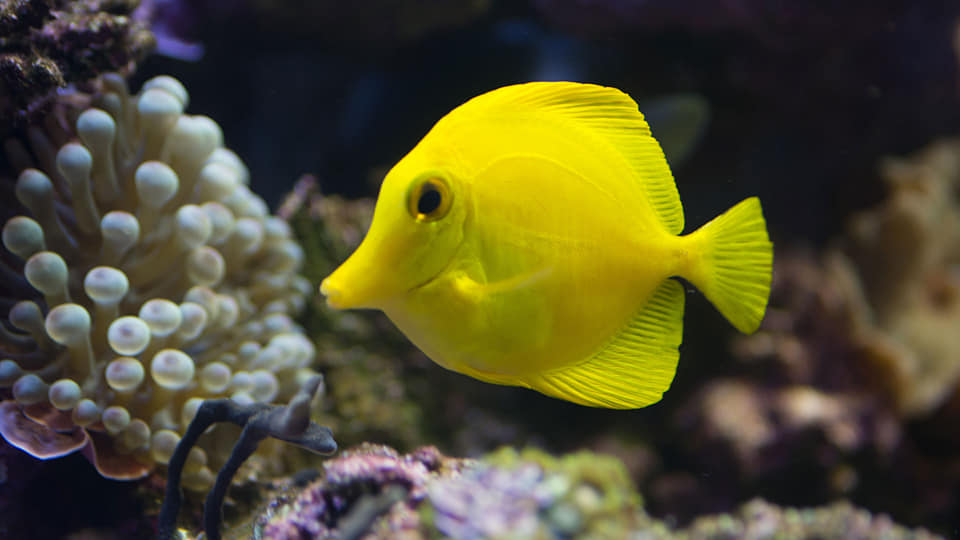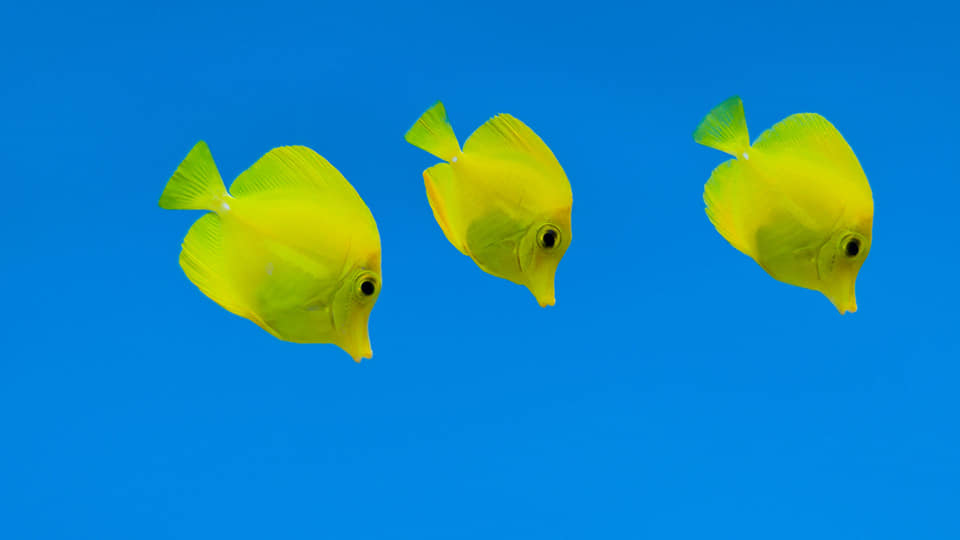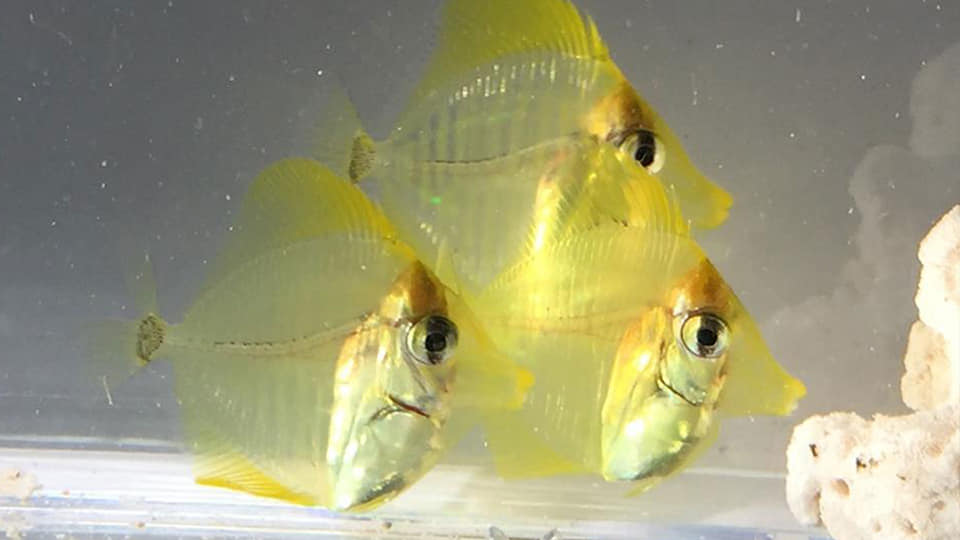
Zebrasoma flavescens (Yellow Tang)
The Yellow Tang is a classic favourite of all serious salt water fish keepers. If we consider medium sized fishes with eye popping colours, the yellow tang catches our fancy. Like most fishes from the tang family, they prefer to live in a group but we need to have bulletproof pockets to keep a shoal of yellow tangs in a tank. In the trade, there are two variants of yellow tang available namely the Hawaii yellow tang and the Philippines yellow tang. There are debates throughout the internet which state the difference in colour is mostly due to the pickup point but my experience states that the Hawaii Yellow tang has a solid bright yellow colour which will brighten up any aquarium while the Philippines yellow tang’s belly loses colour with age.Ideally they should be either kept 1 per aquarium or in a group of 3-5 in a VERY big tank. I tried keeping 2 in a 4 feet tank and I was amazed to see how an angelic fish can turn into the devil. They are pretty territorial and when adding in a tank, we need to really consider the tank mates. If you plan on keeping multiple tangs like powder blue, sailfin tang, yellow tang, naso tang…the order of introduction needs to be discussed with an experienced hobbyist before adding the fish. Unlike freshwater fishes, we can’t readily arrange for a separate tank immediately if there is a quarrel in the tank. They are excellent grazers and they are not picky eaters. Their diet should primarily consist of vegetable matters. Feeding them multiple times a day in little amount gives the best result in any tank instead of one heavy feeding. They will keep on grazing and nipping on the rocks throughout the day. I have kept 3 yellow tangs during different phases of my hobby (will add one soon) and although they are not supposed to be very big like some other tangs, they can be classified as a moderate sized addition not crossing 6” in my tank. Please correct me if any hobbyist has kept yellow tangs personally whose size grew over 6”. They are not very delicate and can adjust to their environment pretty fast and they prefer swimming in open water. So, if you have a tank which has a lot of rock structure, perhaps this fish is not for you. Although the internet states it needs a huge tank to keep one, but I can vouch for it being happy and thriving in a tank as small as a 3’-1.5’-1.5’. The bigger is always better for this fish.They are great addition in a reef aquarium and although they are herbivores, they seem to know the difference between “food” and “corals which look like food”. This fish is sways in the costlier side but if you are planning to be serious about your saltwater hobby, I would definitely recommend trying this fish once in your life. You will not be disappointed.



